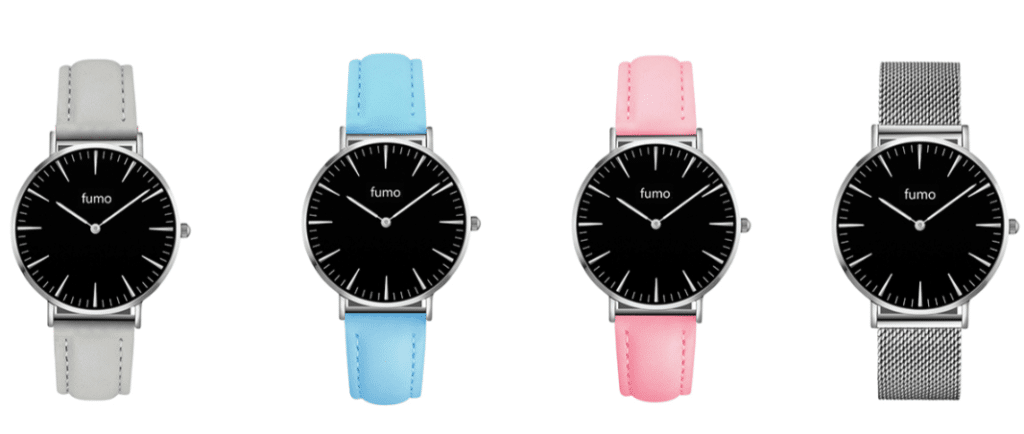What is Ecommerce Image in 2024
A. Definition of Ecommerce Images: Ecommerce image refer to the visual representations of products displayed on online shopping platforms. These images play a pivotal role in providing customers with a clear view of the items they are considering purchasing. In essence, ecommerce images go beyond mere illustrations; they are a visual gateway that allows consumers to virtually inspect and evaluate products before making a decision.
B. Importance of Visuals in the Online Shopping Experience: In the realm of online shopping, visuals hold immense significance. The old adage “a picture is worth a thousand words” rings especially true in ecommerce. Visuals serve as the first point of contact between a potential buyer and a product. The aesthetics, details, and overall presentation captured in ecommerce images contribute significantly to shaping the customer’s perception and influencing their purchasing behavior.
C. Overview of the Role of Ecommerce Images in Customer Decision-Making: The role of ecommerce images extends beyond a mere visual aid. They serve as decision-making catalysts for customers navigating the virtual marketplace. These images communicate not only the physical attributes of a product but also its value proposition. From color variations to intricate details, ecommerce images guide customers in making informed choices, fostering confidence in their online shopping journey. Understanding this role is fundamental for businesses aiming to optimize their online presence and enhance customer satisfaction.
Why Are Ecommerce Images Vital?
A. Enhancing Product Visibility: Ecommerce images are the linchpin for enhancing product visibility in the crowded online marketplace. With attention spans dwindling, captivating visuals draw immediate attention, ensuring that products stand out amidst the digital clutter. Whether through vivid colors, engaging compositions, or unique perspectives, ecommerce images serve as the first hook, compelling potential buyers to explore further.
B. Building Trust and Credibility: Trust is a cornerstone in online commerce, and ecommerce images play a pivotal role in building it. Clear, high-quality visuals instill confidence in customers by providing a realistic representation of the products they are interested in. When consumers can visually assess the details and features of a product, it establishes a level of transparency that fosters trust and credibility, crucial elements for a successful online business.
C. Impact on Conversion Rates: Ecommerce images wield significant influence over conversion rates. A well-optimized and visually appealing product gallery can be the deciding factor for a potential buyer to proceed to checkout. High-quality images showcase the product in its best light, addressing any uncertainties the customer may have. The visual allure, coupled with an easy and secure purchasing process, creates a seamless transition from interest to conversion, ultimately impacting the bottom line positively.
D. Competing in the Online Marketplace: In the fiercely competitive online marketplace, where numerous businesses vie for consumer attention, ecommerce images serve as a strategic weapon. Captivating visuals not only attract potential buyers but also position a brand ahead of the competition. Effective use of images, including lifestyle shots and compelling product presentations, enables businesses to differentiate themselves, leaving a lasting impression that goes beyond the confines of textual descriptions. To thrive in the digital arena, mastering the art of ecommerce images is non-negotiable for businesses aiming to outshine competitors.

Types of Ecommerce Images
Product Images: Product images are the lifeblood of ecommerce, serving as the primary visual interface between products and potential buyers. High-quality photography is the cornerstone of effective product images. The clarity, resolution, and attention to detail in these visuals contribute significantly to a customer’s perception of the product’s value.
1. High-Quality Photography: Investing in high-quality photography is paramount for ecommerce success. Crystal-clear images that accurately represent the product help build trust and confidence among online shoppers. Every detail, from texture to color, should be vividly captured, ensuring that customers feel they have a comprehensive understanding of what they are considering purchasing.
2. Multiple Angles and Perspectives: To provide a holistic view of the product, ecommerce images should include multiple angles and perspectives. A single static image may not convey all the nuances of a product. By showcasing it from different vantage points, potential buyers gain a more comprehensive understanding, fostering a sense of transparency and reducing uncertainties in the online shopping experience. Multiple angles empower customers to make informed decisions, enhancing satisfaction and reducing the likelihood of returns.
Lifestyle Images
1. Showcasing Products in Context: Lifestyle images in ecommerce play a pivotal role in presenting products within real-life scenarios, giving potential buyers a glimpse of how the item fits into their daily lives. By showcasing products in context, such as a piece of furniture in a living room or clothing in a fashionable setting, these images go beyond mere representation. This approach helps customers envision the practical use and aesthetic appeal of the product, making it more relatable and enticing.
2. Storytelling through Visuals: Beyond showcasing the features of a product, lifestyle images engage in storytelling through visuals. These images weave a narrative around the product, creating a connection with the customer. Whether portraying the journey of a piece of jewelry or the versatility of a kitchen appliance, storytelling through visuals enhances the emotional appeal. By evoking a sense of lifestyle and experience, these images contribute to a more immersive and memorable shopping experience, fostering a deeper connection between the brand and the consumer.

Infographics and Charts
1. Conveying Information Clearly: In the dynamic world of ecommerce, where information is key, infographics and charts emerge as powerful tools for conveying complex details in a visually digestible manner. These graphics distill intricate product information into easily understandable visuals, allowing customers to absorb key details at a glance. Whether it’s product specifications, dimensions, or usage guidelines, infographics enhance clarity, making the decision-making process more efficient for online shoppers.
2. Comparisons and Features Highlight: Infographics and charts are instrumental in facilitating product comparisons and highlighting key features. By presenting side-by-side comparisons, customers can quickly evaluate multiple products, aiding them in making well-informed choices. Highlighting features through visually appealing charts enhances the visibility of unique selling points. This not only expedites the decision-making process but also ensures that customers are aware of the distinguishing attributes that set a product apart in the competitive ecommerce landscape.
Technical Considerations for Ecommerce Images
A. Page Load Speed Impact: In the fast-paced world of online shopping, the impact of page load speed on user experience cannot be overstated. Ecommerce images, while visually enriching, can contribute to longer loading times if not optimized. To ensure a seamless experience for potential buyers, it’s imperative to compress and appropriately size images, striking a balance between visual quality and loading speed. This optimization not only enhances user satisfaction but also positively influences search engine rankings, aligning with Google’s emphasis on site speed.
B. Responsive Design for Different Devices: With the diverse array of devices used for online shopping, embracing responsive design is crucial for optimal user experience. Ecommerce images should adapt seamlessly to various screen sizes and resolutions. A responsive design ensures that the visuals retain their quality and impact, regardless of whether customers are accessing the online store via a desktop, tablet, or smartphone. This adaptability not only enhances user satisfaction but also contributes to improved search engine rankings, given Google’s preference for mobile-friendly websites.
C. Mobile Optimization for Image Viewing: Given the prevalence of mobile commerce, optimizing ecommerce images for mobile viewing is non-negotiable. Images should be formatted to suit the smaller screens of mobile devices without compromising clarity and detail. Implementing mobile-friendly image optimization techniques, such as lazy loading and appropriate file formats, ensures a seamless and visually appealing experience for mobile shoppers. This focus on mobile optimization not only caters to the evolving shopping habits of consumers but also aligns with search engine algorithms favoring mobile-friendly websites.

Creating an Effective Ecommerce Image Strategy
A. Conducting Market Research for Image Trends: Crafting a compelling ecommerce image strategy begins with a deep dive into current market trends. By conducting thorough market research. Businesses gain insights into the visual preferences of their target audience. Understanding the evolving landscape of image aesthetics, styles, and consumer expectations enables the creation of visuals that resonate effectively. Staying attuned to image trends ensures that ecommerce platforms remain visually relevant and engaging to potential buyers.
B. Utilizing User-Generated Content: User-generated content (UGC) is a powerful component of an effective ecommerce image strategy. Encouraging customers to share their experiences through images not only builds a sense of community but also provides authentic and relatable visuals. Leveraging UGC as part of the product display enhances trust and credibility. It creates a dynamic interaction between the brand and its customers. Portraying real-life product usage scenarios and fostering a more genuine connection that resonates with potential buyers.
C. A/B Testing for Image Performance: To refine and optimize ecommerce images for maximum impact, implementing A/B testing is invaluable. This involves presenting variations of images to different segments of the audience and analyzing the performance metrics. By experimenting with different visuals, businesses can gauge which images resonate most effectively with their target audience. A/B testing offers insights into factors such as color schemes, angles, or even lifestyle representations, enabling continuous improvement and refinement of the ecommerce image strategy for enhanced customer engagement and conversion rates.
Case Studies
A. Successful Implementation of Ecommerce Image Strategies: Examining case studies that showcase the successful implementation of ecommerce image strategies provides valuable insights for businesses aiming to optimize their visual content. These case studies delve into how brands strategically employed high-quality images. Considering factors like product presentation, image variety, and alignment with market trends. By dissecting the approaches that led to success, businesses can glean actionable tactics to enhance their own ecommerce image strategies. Aligning them with industry best practices and achieving visual excellence.
B. Impact on Sales and Customer Satisfaction: The impact of ecommerce image strategies on both sales and customer satisfaction is evident in compelling case studies. Successful implementation has consistently demonstrated. A positive correlation between visually appealing, well-optimized images and increased sales. Moreover, these studies shed light on the influence of images on customer satisfaction, emphasizing the role of clear. Informative visuals in building trust and loyalty. By delving into these case studies, businesses can uncover the direct link between effective ecommerce image strategies. Improved sales performance, and heightened customer satisfaction, providing actionable insights for their own strategic endeavors.
Expert Insights
A. Interviews with Industry Experts on Ecommerce Image Optimization: Gaining expert insights through interviews with industry leaders in ecommerce image optimization unveils invaluable perspectives and strategies. These experts, well-versed in the nuances of visual content, share their experiences, challenges, and success stories. By tapping into the wisdom of these authorities, businesses can glean actionable tips. Emerging trends, and innovative approaches to enhance their own ecommerce image optimization strategies. The interviews provide a wealth of knowledge. Serving as a compass for navigating the ever-evolving landscape of visual marketing in the digital realm.
B. Tips and Recommendations from Professionals: Expert insights into ecommerce image optimization come bundled with a treasure trove of practical tips and recommendations from seasoned professionals. These tips, distilled from years of hands-on experience, cover various aspects. From selecting the right image formats to leveraging advanced optimization techniques. Professionals in the field offer guidance on maintaining visual consistency across platforms. Harnessing the power of storytelling through images. And staying ahead of evolving consumer preferences. By incorporating these tips, businesses can fortify their ecommerce image strategies and position themselves at the forefront of visual excellence, driving engagement and conversion.
Conclusion
A. Recap of the Importance of Ecommerce Images: In conclusion, the significance of ecommerce images cannot be overstated in the digital marketplace. These visual elements serve as the cornerstone of a successful online presence. Offering customers a tangible connection with products in the virtual realm. The clarity, quality. And strategic presentation of ecommerce images directly influence customer perception and decision-making. Making them an indispensable asset for businesses striving to thrive in the competitive ecommerce landscape.
B. Encouraging Ongoing Optimization and Adaptation: As we navigate the dynamic landscape of ecommerce. It is crucial to emphasize the importance of ongoing optimization and adaptation in ecommerce image strategies. Consumer preferences, technological advancements, and market trends are ever-evolving. Necessitating a proactive approach to keep visual content relevant and effective. Businesses are encouraged to continually optimize their ecommerce images. Incorporating insights from analytics, customer feedback, and emerging industry trends to stay at the forefront of visual marketing excellence.
C. Final Thoughts on the Future of Ecommerce Visuals: In contemplating the future of ecommerce visuals, it becomes evident that the role of images will only intensify. . The integration of immersive visuals and interactive experiences will shape the future of ecommerce. Offering businesses new avenues to engage with consumers. Embracing these innovations and staying agile in the ever-evolving landscape of ecommerce visuals will be key to sustained success in the digital marketplace.

